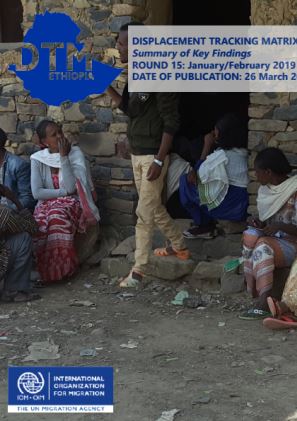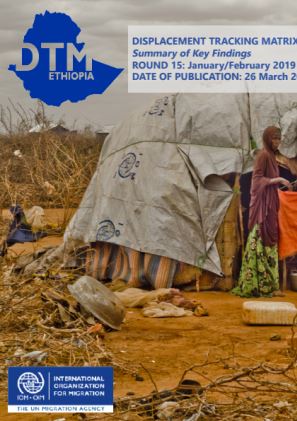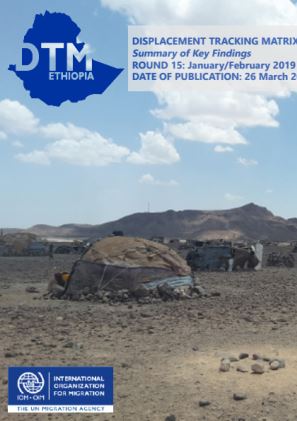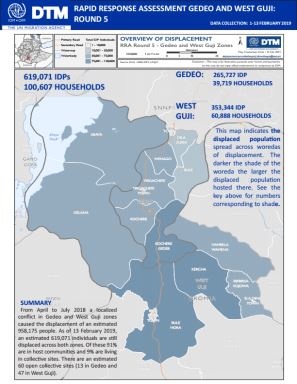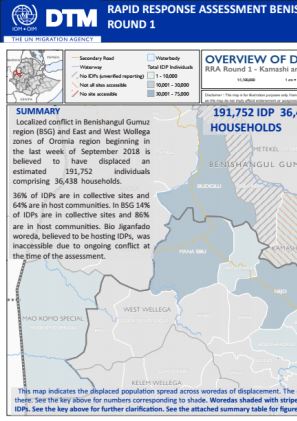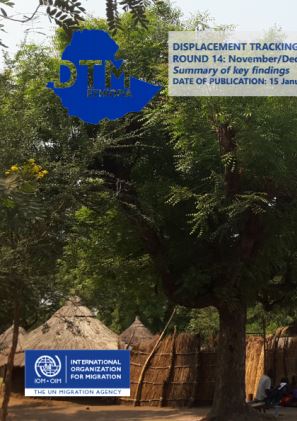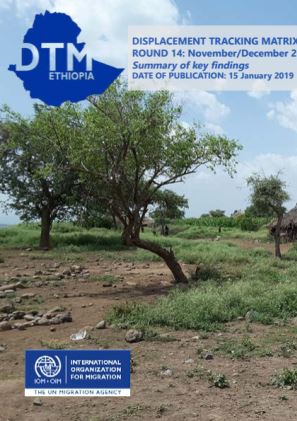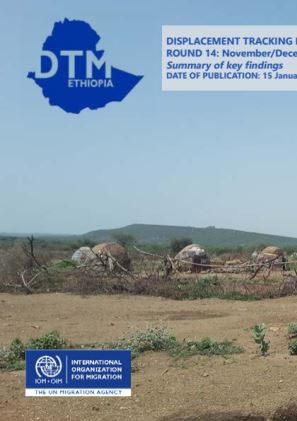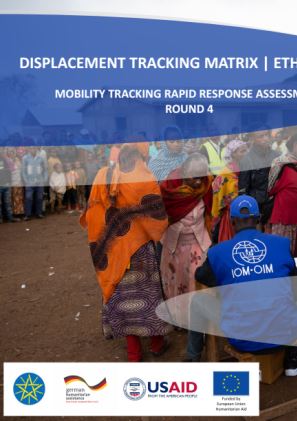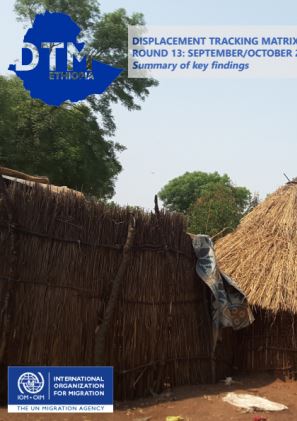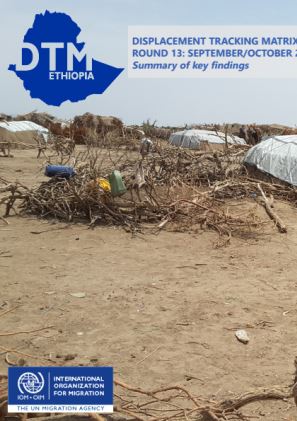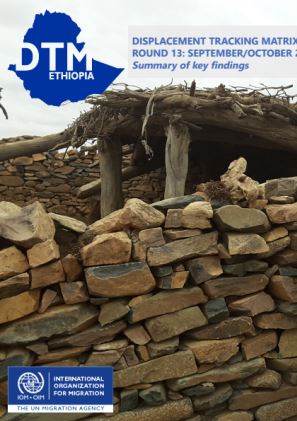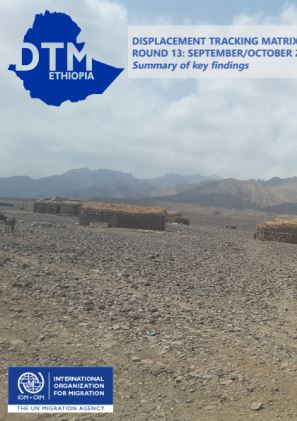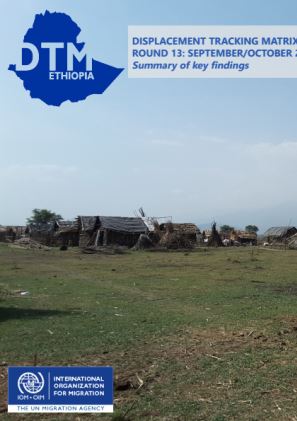-
Countries
-
Data and Analysis
-
Special Focus
-
Crisis Responses
Ethiopia
About Ethiopia
Ethiopia faces one of the most complex human mobility environments in the world, with a range of social, economic, political, and climatic factors driving populations within and outside its borders.
IOM’s Displacement Tracking Matrix (DTM) is a system that monitors human mobility within Ethiopia to provide essential insights into the location, vulnerabilities, demographic breakdown and needs of displaced and mobile populations to provide the Government of Ethiopia, humanitarian and development partners, as well as donors and other relevant stakeholders with a useful evidence base for planning, advocacy, and response.
Since its launch in September 2016 in Ethiopia, the DTM has grown to be a fully integrated component of Ethiopia’s national and sub-national information management architecture, as it is the official source of data on internal displacement in the country.
In Ethiopia, mobility tracking captures internal displacement and return through three annual rounds of Site Assessments (focused on IDPs and the availability of services in their areas of displacement) as well as returning IDPs through the Village Assessment Surveys (focused on host community capacity to absorb returns targeting IDPs, returning IDPs, returned migrants and host community members and their access to services with a focus on livelihoods and reintegration). Mobility tracking data is largely used to inform humanitarian response and development planning and as such is coordinated with both humanitarian and development actors in country as well as with the Ethiopia Disaster Risk Management Commission. Flow Monitoring captures inter-and intra-regional migration flows daily at key identified transit locations. This information is largely used to inform more developmental programming including migrant assistance and protection programming. This data is also shared with humanitarian and development counterparts in the country and is collected in close coordination with the Ministry of Labor and Social Affairs. Both DTM components intend to provide an evidence-base for programming and policy that is increasingly integrated and area-based. In addition to mobility tracking and flow monitoring, DTM Ethiopia also deploys thematic household level surveys to provide representative, granular information which can be triangulated with pre-existing DTM data collected through key informants and focus group discussions. This data enables the humanitarian and development communities to obtain important insight into the needs, conditions, vulnerabilities, and intentions of IDPs which can be particularly useful in informing programs, especially with regards to durable solutions, livelihoods, and other Humanitarian Development Nexus (HDN) related programming and policy initiatives.
DTM Ethiopia currently deploys over 200 staff and enumerators to track displacement, returns and migrant movements in the country.
Current Donors
- USAID
- ECHO
- Canada
- Japan
- EHF
Ethiopia — National Displacement Dashboard 15 (January - February 2019)
The majority of the recorded population were displaced before 2018, with 904 sites which reportedly opened in 2016/17 (DTM Rounds 1 - 8). Conflict was reported as the primary driver of displacement (1,663,396 IDPs), followed by displacement due to climate induced factors (508,723 IDPs).
Ethiopia — Displacement Report 15, Tigray (January - February 2019)
82,968 displaced individuals comprising 38,293 households in 162 displacement sites were identified in Tigray region.
Ethiopia — Displacement Report 15, Somali (January - February 2019)
1,166,878 displaced individuals comprising 196,628 households in 409 displacement sites were identified in Somali region.
Ethiopia — Displacement Report 15, Oromia (January - February 2019)
859,290 displaced individuals comprising 143,902 households in 472 displacement sites were identified in Oromia region.
Ethiopia — Displacement Report 15, Gambella (January - February 2019)
20,741 displaced individuals comprising 3,064 households in 13 displacement sites were identified in Gambella region.
Ethiopia — Displacement Report 15, Amhara (January - February 2019)
There are 23,676 displaced individuals comprising 7,158 households in 74 displacement sites were identified in Amhara region.
Ethiopia — Displacement Report 15, Afar (January - February 2019)
49,437 displaced individuals comprising 8,980 households in 55 displacement sites were identified in Afar region.
Ethiopia — Gedeo and West Guji Rapid Response Assessment 5 (1-13 February 2019)
From April to July 2018 a localized conflict in Gedeo and West Guji zones caused the displacement of an estimated 958,175 people.
Ethiopia — Benishangul Gumuz/ East and West Wellega Rapid Response Assessment 1 (8 — 16 February 2019)
Localized conflict in Benishangul Gumuz region (BSG) and East and West Wollega zones of Oromia region beginning in the last week of September 2018 is believed to have displaced an estimated 191,752 individuals comprising 36,438 households.
Ethiopia — Interactive Site Profile Generator 14 (November - December 2018)
The interactive site profile generator can be used to create site profiles for any site assessed in the round. Simply select the site you wish to have a profile for and generate the new file.
Ethiopia — Displacement Report 14, Somali Region (November - December 2018)
1,006,276 displaced individuals comprising 167,652 households in 389 displacement sites were identified in Somali region.
Ethiopia — Displacement Report 14, Tigray Region (November - December 2018)
72,113 displaced individuals comprising 33,448 households in 149 displacement sites were identified in Tigray region.
Ethiopia — Displacement Report 14, Oromia Region (November - December 2018)
1,145,848 displaced individuals comprising 180,772 households in 515 displacement sites were identified in Oromia region.
Ethiopia — Displacement Report 14, Gambella Region (November - December 2018)
24,689 displaced individuals comprising 3,624 households in 14 displacement sites were identified in Gambella region.
Ethiopia — Displacement Report 14, Amhara Region (November - December 2018)
13,519 displaced individuals comprising 4,109 households in 59 displacement sites were identified in Amhara region.
Ethiopia — Displacement Report 14, Afar Region (November - December 2018)
50,619 displaced individuals comprising 8,780 households in 54 displacement sites were identified in Afar region.
Ethiopia — National Displacement Dashboard 14 (November/December 2018)
The majority of the recorded population were displaced during 2017 with 604 sites which reportedly opened in 2017 (DTM Rounds 3-8). Conflict was reported as the primary driver of displacement (1,773,482IDPs), followed by displacement due to climate induced factors (498,417IDPs).
Ethiopia — Gedeo and West Guji Rapid Response Assessment 4 (12-30 November2018)
From April to July 2018 a localized conflict in Gedeo and West Guji zones caused the displacement of 958,175 people. Of these, an estimated 166,792 individuals were displaced in West Guji while 791,383 individuals were reportedly displaced in Gedeo.
Ethiopia — Displacement Report 13, Oromia Region (September — October 2018)
907,525 displaced individuals comprising 143,901 households in 466 displacement sites were identified in Oromia region.
Ethiopia — Displacement Report 13, Gambella Region (September October 2018)
21,073 displaced individuals comprising 3,226 households in 14 displacement sites were identified in GAMBELLA region.
Ethiopia — Displacement Report 13, Somali Region (September — October 2018)
1,016,166 displaced individuals comprising 168,246 households in 388 displacement sites were identified in SOMALI region. These figures
Ethiopia — Displacement Report 13, Tigray Region (September — October 2018)
49,552 displaced individuals comprising 20,842 households in 103 displacement sites were identified in TIGRAY region.
Ethiopia — Displacement Report 13, Afar Region (September — October 2018)
48,337 displaced individuals comprising 8,816 households in 54 displacement sites were identified in AFAR region. These figures represent a decrease of 5,243 in the total individuals (-9.79%) a decrease of 98 households (-1.10%) and no increase in sites since round 12 July/August 2018.
Ethiopia — Displacement Report 13, Amhara Region (September — October 2018)
11,821 displaced individuals comprising 3,732 households in 47 displacement sites were identified in AMHARA region.



